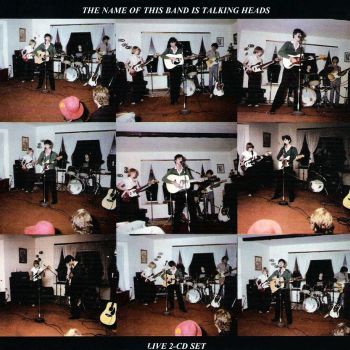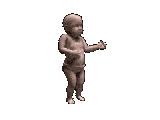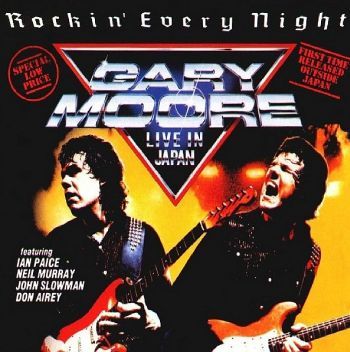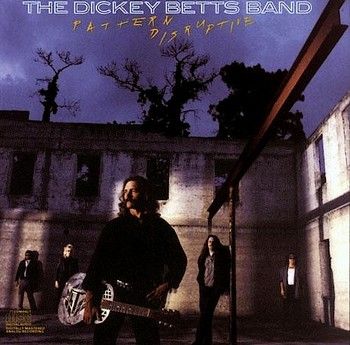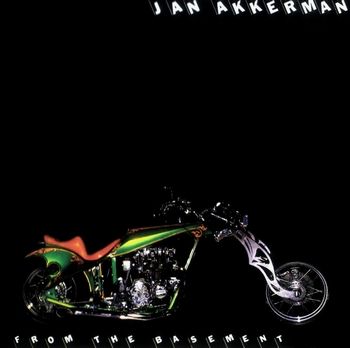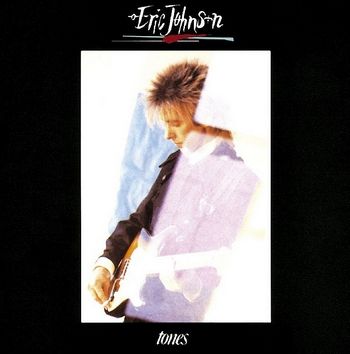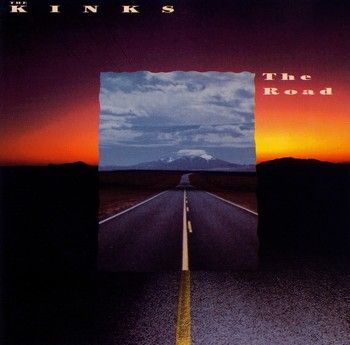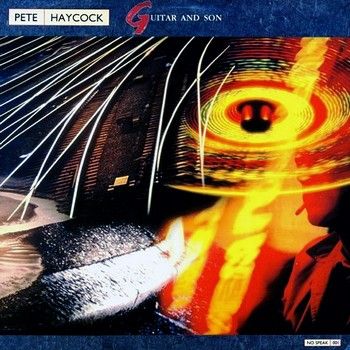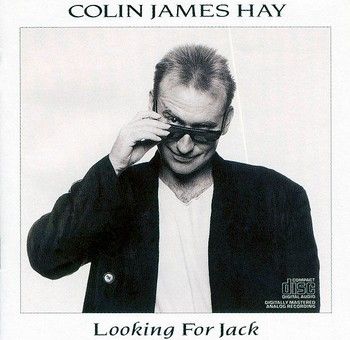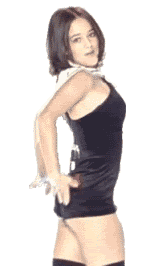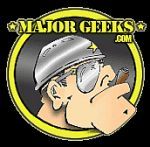
Widespread Panic
- Space Wrangler - 1988 - Landslide Records
The Athens, Georgia quintet Widespread Panic deserves the name Jam Band probably more than any of their fellow piers (Minus The Grateful Dead of course). They have toured non stop for practically eight-teen years. They have gotten through line up changes, tour cancelations, album flops, unpopularity and even death. Very few have that much commitment, and have been playing a fabulous version of Jam Roots Rock through all of the tough times Widespread Panic has. So, obviously Panic definitely deserves your respect. Widespread Panic was formed in the city of Athens, Georgia supposably during the year of 1982. The band was founded by guitarist Michael Houser and lead singer John Bell well they were attending college. Soon enough, bassist Dave Schools was added in and they were a true band. The band did not exactly grow their following and fame through this already spectacular trio. During they year of 1986 the band would add Todd Nance on the drums, percussionist Domingo (or Sunny) Ortiz, and John Hermann on the keyboard. Through this lineup they would release this debut album. And would of course go on to create brilliant ground breaking music. Widespread Panic or just simply "Panic" as most would call them, are more of an offspring of The Grateful Dead than any other band within their genre. Their music isn't exactly alike, but it does carry the same ideas, and have some wonderful similarities. Don't take that in a "Panic isn't original!" way, because they have more than enough elements to make them their own unique band. Michael Houser, easily seen that he was heavily influenced by The Grateful Dead front man Jerry Garcia. His guitar playing incorporates a variety of noodeling styles, and has the power to shift a song with a single note. Which Garcia of course had. He manages to be the lead guitarist, and still not take anything away from the rythm, nor own the spotlight. Dave Schools, kind of an off shoot of Phil Lesh and John Entwistle. At times very leading, but he also relies his job to keep the rythm strong and sturdy. And of course you cannot forget the two drummers. On a more percussion led Mickey Hart, and the other, though all drummer, doesn't resemble Billy Kreutzmann's playing. Widespread Panic plays a very jam induced "Roots Rock". Meaning they mix tradional music like Country, Folk, and Bluegrass with Rock. They actually have a very good Country Rock sense. And surprisingly they have some strait up Rock songs. Most of their tracks rely on a riff, but quickly feature rythm as they highpoint. Oddly enough Panic also includes an almost Beach Rock song onto their track list. Which to me, is actually the best and most interesting tracks. Panic starts the album of with a rythmic piece entitled "Chilly Water". The track has a slightly dark and mysterious sense to it. Houser's playing is very unique compared to other tracks on this album. Not as much noodled, and he plays in a backed up leading fashion. Schools' strait bass line, leads the song and is quite catchy. Bell's voice and rhythm acoustic playing keep the song very interesting. His voice is hard to describe. He's kind of a mix between Bad Company's and Free's Paul Rodgers, and The Grateful Dead's Ron "Pigpen" McKernan. The track is oddly enough very serious, and knowing this band and Jam Bands in general, they're not usually serious. The love of music and playing seems to usually put them in a state where it's about pleasure and silliness. Overall, the track is definitely different, but none the less good to hear. Here's a happy, positive, album titled track. It sends off a much better vibe than it's previous tracks. The lyrics tell a though not an extraordinarily exciting story, they tell one that is enough to keep me interested and amused. The track is of course a jam, and has a catchy main riff that is played once in awhile. The piano work is also exceptionally catchy. "Space Wrangler" goes through many different tempos, showing off the bands ability to flow flawlessly, and their playing ability in general. Various solos are given throughout the song. Each helps to keep the song alive and amusing throughout the number. Definitely one of my favorite pieces on the album. "Coconut", a very happy, feel good, almost Beach Rock like tracks. The lyrics are very interesting, as are the rymes and verses. I always find myself singing this song out of no where also. The track opens up with some very interesting and rather great sound percussion. Compiling whistles, bongos, random stick hitting, ect. Soon enough Bell hits the listener with that catchy line. Quote: "I like coconuts. They smell like pretty ladies lying in the sun". Pretty simple, but with out a doubt catchy. I love the guitar playing on this song more so than any other on the album. It is soooo Garcia influenced, and just kind of free. It seems as though most of this album was improvised, because it's not odd to hear random solos bounce up out of no where. May sound like musical masturbation (as would jamming in general), but it has always appealed to me. Perfect track, no flaws, all good. A perfect follow up track to "Coconut", lies at number five. "The Take Out" is a Country instrumental. It's is lead by a violin that has little appealing outburst that grow bigger and more intense each line. There is no electric guitar played on this, leaving the spot light on the violin lines. Which always keep me coming back to this song. The track is rather simple, but satisfies me to a perfect degree. It's smooth and very relaxing, but of course tosses in a few seconds of liveliness during every entry by guest fiddlest David Blackman. I personally could not ask for anything more than what is given right here with "The Take Out". Once again a great follow up with "The Porch Song". Though it gives off the idea that this would be some kind of Jug Band like track that you can imagine being played on the porch, it is not. It is of course a Country Rock song. Led by a great simple guitar riff. The song at first, came off annoying to me, but I've learned to really love it. And it is actually a concert pleaser. I even have a shirt based on the track :p. The opening guitar riff mixes with every instrument perfectly, and vise versa. Soon, enough Houser breaks out of the opening and the riff with a moderate passed well matching solo. The chorus (That appears soon after the solo) is quite catchy. The vocals, compare to various other tracks are slightly hard to understand. They are mostly sang in unison, which possibly the reason why, Overall, the track is great. A definite pleaser :thumb:."Stop-Go" is a pretty good track, with some great bass picking. Which is odd, because Schools usually doesn't use a pick. The time signatures are quite odd, almost each instrument has a different one. The track, lyrically and vocally isn't that lively, but the music is. The song, jam wise is magnificent. More unique than any song on this album, but it lacks something. I'm not sure what, but it's of course there. The song ends at a short four minutes and fifty-one seconds. Which for a jam that is as good as this, is way, way to short. I particularly love the breakdowns and tempo changes the song incorporated. And of course the various time signatures it includes. Music wise = Fantastic. Lyrically/Vocally = Boring. "Driving song", is a nice, more beautiful musical piece. It is very different compared to each and every song on this album. Different forms of percussion are used, and David Blackman adds some great fiddle playing, that always adds interest. The song flows extremely well, and is actually quite one. Like nothing goes extremely far out and ruens the song. Houser does manage to put out a magnificent guitar solo, that is one of my favorites on the album. It's very clean and is definitely in the key. I also believe a twelve stringed guitar is used by Bell on this track, just simply adds a beautiful sound. Great tune. Here's is the first of the three new tracks added. "Holden Oversoul" is a great, lively Country song. It's structure is very simple, but flows great. Especially some of the backing vocals (which I believe are done by Dave Schools) and the bass lines, each of course have a bass tone. Schools actually pulls out some slap and pop maneuvers in this tracks. They sound fantastic and are really great to hear from him. Houser, during some slaps lines whips out a great, progressive solo. That easily amazes me. In conclusion, simply an amazing song. This track, "Contentment Blues", is more of a Hard Rock, Psychedelic, Progressive song. It doesn't really sound like a Blues song. But anyway, the song is pretty interesting, and the vocals are pretty humorous, even if they aren't supposed to be. "My chicken tastes good" is repeated a few times, which is kind of odd. Instrumentally the song is needless to say good, and the composition is even different compared to the rest of Space Wrangler. Well, it's not the common Widespread Panic you hear on the other tracks and the rest of their career, but it is innovative for them. Now here is something I don't get. It's not that big of a deal, or is important in any way. But why did they stick the newer bonus tracks around this number? It's just odd. As is the song. It combines various noise effects, percussion, samples, and percussion effects. The song may be new. I can see why they wouldn't state it on the cover as they do with "Contentment Blues", "Me and the Devil Blues/Heaven", and "Holden Oversoul", being that it only runs at one minute and twelve seconds. Very weird, and probably a filler, or just for fun. Here is a Robert Johnson/David Byrne/Jerry Harrison written song. The tempo is very slow, and the song just flows so well. I love how they add their Country Jam Rock style to this Blues song. I personally would choose Country over Blues any day, but that's pretty irrelevant. Bell manages to capture the passion Johnson puts out on this song supposably about him selling his soul to Satan. I love the keyboarding done on the track, it's fits perfectly. Various effects are used on the recording that add a mystique sense to the whole feeling of the song. The tune runs at a long length of fifteen minutes and eleven seconds, though it equally divides up the songs. "Me and The Devil Blues" ends at about six minutes, but it's hard to tell being that it lacks a median. It gets very noticeable when heaven starts. It once again gains that mystique feeling, even more so than the previous portion the track. "Heaven" is a lot more free, and just less controlled. Very chaotic, but it sounds great. It's not till ten minutes and fourty-four seconds when John Bell starts singing. Previously, the song is kept alive and interesting with various great solos, that are occasionally on the edge of going over the top, but luckily give out right before. I love the definition of Heaven that is given out. They basically say it's a bar, where the band plays "Our" favorite song, and nothing bad happens. Or something like that. Well, god song. Fantastic album, nothing more is needed to be said. 8.8/10 © Badmoon January 14th, 2005 Site © 2005-2012 Sputnikmusic.com All Reviews Displayed With Permission of Authors |http://www.sputnikmusic.com/review/938/Widespread-Panic-Space-Wrangler/
[N.B: The preceding review is based on the bonus CD reissue]
Listen to the band's brilliant "Live in the Classic City" album
[All tracks @ 320 Kbps: File size = 95.7 Mb]
TRACKS
1 Chilly Water 5:34
2 Travellin' Light 3:33
3 Space Wrangler 6:42
4 Coconut 4:58
5 The Take Out 2:15
6 Porch Song 2:47
7 Stop-Go 4:46
8 Driving Song 8:17
9 Gomero Blanco 1:07
All songs written and composed by John Bell, Michael Houser, Todd Nance, Domingo Sunny Ortiz, and Dave Schools except "Travellin' Light" by J. J. Cale. N.B:This album is also available on CD with the bonus tracks, "Holden Oversoul", "Contentment Blues", and "Me and the Devil Blues/Heaven"
MUSICIANS
John Bell - Guitar, Vocals, Background Vocals
Michael Houser RIP - Guitar, Vocals
David Schools - Bass, Percussion, Vocals, Background Vocals
Tim White - Keyboards
Todd Nance - Drums, Percussion, Vocals
Domingo Sunny Ortiz - Percussion
David Blackman - Fiddle
John Keane - Vocals, Background Vocals
Alberto Salazarte - Rap
Bill Jordan - Laughter
ABOUT WIDESPREAD PANIC
One of the many neo-hippie jam bands inheriting the road-warrior mantle left behind by the Grateful Dead, Widespread Panic established a devout grassroots following on the strength of constant touring and a loose, rootsy brand of Southern rock informed by jazz and blues textures. The group's origins date to 1982, when vocalist John Bell and guitarist Mike Houser first began playing together while attending college in Athens, GA. When bassist Dave Schools left academia to join the duo the next year, Widespread Panic were officially born. The band recorded its debut single, "Coconut Image," in 1986; drummer Todd Nance joined soon after, followed by the addition of percussionist Domingo "Sunny" Ortiz and finally keyboardist John "JoJo" Hermann. Widespread Panic released their energetic debut LP, Space Wrangler, in 1988 on the tiny Landslide label. After several years of relentless touring, they signed to major label Capricorn, which issued the group's eponymously titled sophomore effort in 1991. Appearances on the 1992 and 1993 H.O.R.D.E. tours greatly expanded their fan base prior to 1993's Everyday, while 1994's Ain't Life Grand spawned the AOR hits "Airplane" and "Can't Get High." After teaming with fellow Georgian Vic Chesnutt to record 1995's Nine High a Pallet under the name Brute, Widespread Panic reconvened for the album Bombs and Butterflies, released in 1997. In the spring of 1998, the band released Light Fuse, Get Away, and 'Til the Medicine Takes followed a year later. Another Joyous Occasion (2000) and Don't Tell the Band (2001) marked the band's first albums of the new millennium. In June 2002, Widespread Panic returned to the road for their annual summer tour of the States, but within a month, founding member and lead guitarist Michael Houser had to bow out. Houser was battling cancer and returned home to Athens, GA, to rest while guitarist George McConnell stepped in to finish the tour. On August 10, 2002, Houser succumbed to complications from pancreatic cancer at the age of 40. Houser's wish was that the band would carry on after his passing, and with McConnell becoming a permanent replacement, Widespread Panic did just that. Their next full-length album, Ball, was released in April of 2003. Night of Joy and Über Cobra, both of which appeared in late March 2004, featured live selections from two of the band's shows at The House of Blues in Myrtle Beach, SC, while they toured in support of Ball. These marked Widespread Panic's second and third live efforts, follow-ups up to 2000's Another Joyous Occasion. They returned to the studio later that year for the Halloween-themed covers record Jackassolantern, and again in 2006 for Earth to America. Free Somehow, the band's tenth studio album (and first with newcomer guitarist Jimmy Herring), followed in early 2008, with Dirty Side Down appearing in 2010; it was followed by the in-concert set Live in the Classic City II in the fall. © Jason Ankeny © 2011 Rovi Corporation. All Rights Reserved http://www.allmusic.com/artist/widespread-panic-p5823/biography
BIO (WIKI)
Widespread Panic is an American rock band from Athens, Georgia. The current lineup includes guitarist/singer John Bell, bassist Dave Schools, drummer Todd Nance, percussionist Domingo "Sunny" Ortiz, keyboardist John "JoJo" Hermann, and guitarist Jimmy Herring. Michael Houser and George McConnell have also played lead guitar for the band. Since their inception in Athens, Georgia, in 1986, Widespread Panic has risen to elite status among American jam bands. Following in the steps of other Southern rock jam bands such as The Allman Brothers, they have influences from the Southern rock, blues-rock, progressive rock, funk and hard rock genres. They are frequently compared to other jam band "road warriors" such as the Grateful Dead and Phish. Widely renowned for their live performances, as of 2011, they hold the record for number of sold-out performances at Red Rocks Amphitheatre (Morrison, Colorado) at 38 and Philips Arena (Atlanta, Georgia) at 17. John Bell and Michael Houser met in 1981 in their dorm at the University of Georgia. Bell had been playing guitar as a solo act, and invited his new friend Houser, also a guitarist, to join him. They began living together and collaborating on music in that year, writing still-popular songs such as "Driving Song" and "Chilly Water" together. Bassist Dave Schools met Bell and Houser in 1984 and first played with them on February 24, 1985, at the A-Frame house on Weymanda Court in Athens. On February 6, 1986, Houser called childhood friend and drummer Todd Nance to sit in with Houser, Bell, and Schools for a charity event in Athens; it was their first show as "Widespread Panic". The band was named for Houser's once-frequent panic attacks. Texan percussionist Domingo S. Ortiz ("Sunny") joined the band later that year. The band played in fraternities and bars on a regular basis before Panic signed a contract with Landslide Records in 1987. In February of 1987 the band played the now-legendary series of one dollar Monday night shows at the Uptown Lounge in Athens and the crucial local press began to take notice -- FLAGPOLE & Athens Observer art columnist Shan Clark emphasized Widespread Panic's musical virtuosity, songwriting and professionalism. In September of the same year, they recorded their first album, Space Wrangler, at John Keane's studio in Athens. Col. Bruce Hampton is rumored to have delivered the first pressing to the band. Songs on the album included “Chilly Water,” “Travelin' Light,” “Space Wrangler,” “Coconut,” “The Take Out,” “Porch Song,” “Stop-Go” and “Driving Song.” After Space Wrangler, touring expanded to include additional northeastern dates, along with Texas, Colorado, the west coast, and internationally to Vancouver, Canada. They played their first show in Colorado in March 1990, opening for Jerry Joseph's band Little Women. Widespread Panic signed with Capricorn Records in January 1991. Later that year, they released their major label debut, Widespread Panic (aka Mom's Kitchen). That same year Billy Bob Thornton directed the movie Widespread Panic: Live from the Georgia Theatre which was recorded over two nights in Athens, Georgia. As the band began to tour more, John Hermann ("JoJo") joined the band as a keyboardist in March 1992 replacing Dixie Dregs keyboardist T. Lavitz who joined the band a year earlier. The band continued to tour throughout the entire US in 1992 joining the famous HORDE tour with Blues Traveler, Phish, and the Aquarium Rescue Unit, among others. They released "Everyday" in March 1993 and "Ain't Life Grand" in September 1994. Panic marked their rise by playing on network television for the first time in November 1994. On April 18, 1998, to celebrate the release of their first live album, Light Fuse, Get Away, Widespread Panic offered a free "CD release party" concert in Athens Georgia. An estimated 80,000–100,000 fans descended on the town, transforming it into one of the largest CD release parties in history. In 2002, the band received gold certification for their concert DVD Live at Oak Mountain. They also headlined two nights of the first annual Bonnaroo Music Festival which drew a crowd upwards of 70,000 people. In early 2002, guitarist Michael Houser was diagnosed with pancreatic cancer. Houser continued to perform with the band into the middle of that year, but following a performance on July 2, 2002 in Cedar Rapids, Iowa he left the tour because of his declining health. Guitarist George McConnell, a former bandmate of JoJo Hermann's in Beanland, took over as lead guitarist for the remainder of the band's scheduled dates. Michael Houser died on August 10, 2002. In 2003, the band released Ball, the first studio album with McConnell as the guitarist. The album was unique among the band's offerings in that none of the songs included had been performed live by the band prior to the recording. All of the material included was written specifically for the album with the exception of "Time Waits," a song which John Bell had performed in solo appearances, and "Don't Wanna Lose You," a song John Hermann had performed with his side-project Smiling Assassins. Late in 2003, the band announced that they would be taking a hiatus from both recording and performing in 2004. However, 2004 did see the release of three live albums, engineered by Billy Field: Night of Joy and Über Cobra--both of which were recorded during a November 2003 three-night run of shows at the House of Blues in Myrtle Beach, SC--as well as Jackassolantern, a compilation of cover songs performed during the band's Halloween shows. A fourth live album taken from the Myrtle Beach shows, Live at Myrtle Beach was released in early 2005. In January 2006, the band recorded their 9th studio album, Earth to America, in Nassau, Bahamas at Compass Point Studios, with Terry Manning producing. It was released June 13, 2006. Their May 9 show at Atlanta's Fox Theatre was simulcast in LIVE HD, via satellite, in select movie theatres nationwide. Over 60,000 fans across the country watched it live in the theatres. This show was also released in DVD format on November 14, 2006, entitled 'Earth to Atlanta'. On August 2, 2006, nearing the end of the summer tour, the band announced that George McConnell had left the band making July 30, 2006 at the Fox Theater in St. Louis, MO his last show. Producer John Keane and former guitar technician Sam Holt filled in on guitar for the remaining two weeks of the tour. In late 2006, Fayetteville, NC native Jimmy Herring took over the reins of the lead guitarist in the band, kicking off their fall tour with three nights at Radio City Music Hall in New York City. Panic’s 7th annual New Year’s shows on December 30 and 31, 2007, marked their 15th and 16th sellout performance at Philips Arena. The band released their 10th album, Free Somehow, on February 12, 2008. It, too, was recorded with producer Terry Manning at Compass Point Studios. Following the release of the new studio album, Widespread Panic began to release vintage concert performances from the Widespread Panic Archives. Carbondale 2000 was released on June 10, 2008, followed by Valdosta 1989 released on February 24, 2009, and Huntsville 1996 released on June 23, 2009. The band will continue to dig into their show archives, which encompasses the past 25 years, and release these shows as multi-track recordings. June 27, 2008, marked the band's 32nd sold-out show at Red Rocks Amphitheater. This was more than any other band in the venue's history. Mayor John Hickenlooper proclaimed Friday, June 27 "Widespread Panic Day" in the City and County of Denver. The same year, Widespread Panic was inducted into the Georgia Music Hall of Fame on September 20. The band continued to tour throughout the rest of 2008 and the spring of 2009. In the summer of 2009, Widespread Panic teamed up with fellow southern rockers, The Allman Brothers to do a summer and fall co-headlining tour. In March 2010, it was announced that Widespread Panic would be releasing a new album entitled Dirty Side Down on May 25, 2010. 2010 would also see the release of Live In The Classic City II, containing music from its 2000 shows. On September 29, 2010, Widespread keyboardist Jojo Herman announced that the band would be going on hiatus in 2012. In an interview with the Vanderbilt Hustler, Herman explained, "Next year will be our 25th anniversary. After that, we're probably going to call it (quits) for awhile. So we're looking forward to next year and going out on a high note." The band went on to tour steadily throughout 2011, ending the year with their first show at Time Warner Cable Arena in Charlotte, NC. In early 2012, the band played a limited number of shows. From January to February the band embarked on their first ever tour billed as completely acoustic. Dubbed the Wood Tour, it started in January at the Fillmore in Silver Spring, MD and ended at The Belly Up in Aspen, CO. Between the two short legs that comprised the Wood Tour the band played a four night run in Mexico, marking their first shows in the country. The rest of 2012 saw the band on hiatus but band members were active with other projects. Dave Schools toured with the Mickey Hart Band, while Jimmy Herring recorded a new album and toured with his own band. On August 17, the band announced their first scheduled shows of 2013. Known for never playing the same show twice, the band has a show-to-show ritual of choosing the night's setlist. At the beginning of each tour, a member of the band's road crew makes a master list of all the songs the band performs and laminates it. Each night before the show he marks the last 3 nights' set lists in different colors. The band can see what has been played recently and then decide what songs to play during the first set. They return back to the list during setbreak to pick songs for the second set, and likewise, return after the second set for any additional sets if playing more than two, or the encore. This process is explained by the late Garrie Vereen in the DVD The Earth Will Swallow You. Widespread Panic has the policy of allowing any of their fans to tape, trade, and to a limited extent freely distribute their shows. However, anonymous distribution such as P2P and commercial distribution is not permitted. Fans have been taping and trading shows since before they gained national prominence, allowing them to gain their strong national following.
